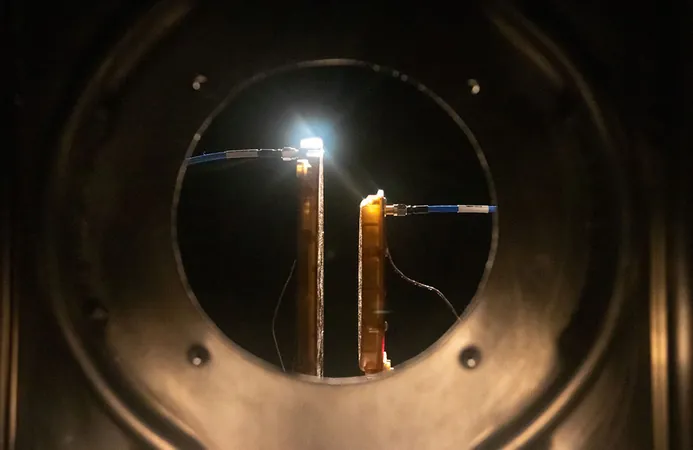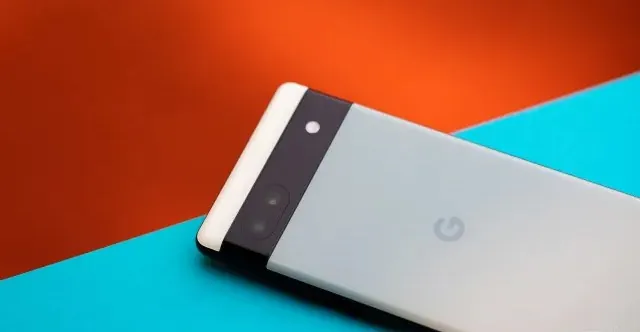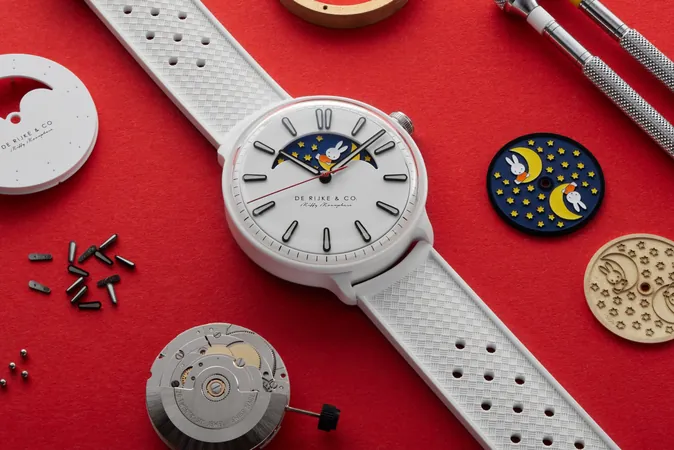
Astrobotic and WiBotic Revolutionize Lunar Power with New Wireless Charging System
2025-05-24
Author: Siti
A Game-Changer for Lunar Exploration
Astrobotic Technology Inc., a pioneering company based in Pittsburgh, has just made waves with the successful testing of its innovative wireless charging system designed for lunar missions. This breakthrough is set to transform how we power equipment on the Moon, marking a pivotal step toward sustainable exploration of the lunar surface.
Surviving the Harsh Lunar Nights
The lightweight, ultra-fast wireless charger has proven its capability to supply power sufficient for systems to endure the grueling 14-day lunar night. Collaborating closely with WiBotic, and with significant contributions from Bosch, the University of Washington, and NASA's Glenn Research Center, Astrobotic is on the brink of changing the landscape of lunar operations.
A Universal Power Standard?
John Thornton, CEO of Astrobotic, heralded the achievement as foundational for a universal power standard across the Moon and Mars. "Our wireless solution is designed to support missions across various agencies and industries, engineered to withstand the most extreme environments. If your equipment needs reliable power on the lunar surface, this is the solution you'll need!"
Eliminating Dusty Disconnects
Astrobotic points to the advantages of wireless power transfer for both automated and astronaut-operated systems on the lunar surface. Traditional connectors often fail due to abrasive lunar dust, but the wireless system provides a cleaner and more efficient alternative, ideal for powering science missions and rovers, ensuring they survive the long lunar nights.
Proven Performance in Extreme Conditions
Previous tests at NASA’s Kennedy Space Center have shown that Astrobotic’s charger can function flawlessly even when buried under 4 cm (1.5 in.) of lunar regolith, showcasing no degradation in power transfer.
Rigorous Testing Protocols
The acceptance testing campaign spanned four months and included various challenging scenarios. Starting with a thermal vacuum test that simulated the lunar atmosphere, the system operated flawlessly in conditions as extreme as -292 °F. Subsequent tests included vibration conditions mimicking rocket launches and checks for electromagnetic interference, ensuring seamless integration with rockets.
A Leap Towards More Lunar Science Missions
Masoud Arabghahestani, senior thermal engineer at Astrobotic, expressed excitement about the milestone: "Passing acceptance testing means we're now officially flight-qualified and ready to bring this technology to the Moon. With proven reliability, we can unlock new frontiers for science missions, allowing researchers to gather unprecedented data and push the limits of lunar exploration."
What’s Next for Astrobotic?
Developed under a NASA Tipping Point contract, a commercial model of the 125 W wireless charger is available for advanced power needs in space applications. Moreover, a more powerful 400 W version is undergoing testing, achieving energy efficiencies as high as 85%. Prepare for a new era of lunar science with Astrobotic leading the charge!





 Brasil (PT)
Brasil (PT)
 Canada (EN)
Canada (EN)
 Chile (ES)
Chile (ES)
 Česko (CS)
Česko (CS)
 대한민국 (KO)
대한민국 (KO)
 España (ES)
España (ES)
 France (FR)
France (FR)
 Hong Kong (EN)
Hong Kong (EN)
 Italia (IT)
Italia (IT)
 日本 (JA)
日本 (JA)
 Magyarország (HU)
Magyarország (HU)
 Norge (NO)
Norge (NO)
 Polska (PL)
Polska (PL)
 Schweiz (DE)
Schweiz (DE)
 Singapore (EN)
Singapore (EN)
 Sverige (SV)
Sverige (SV)
 Suomi (FI)
Suomi (FI)
 Türkiye (TR)
Türkiye (TR)
 الإمارات العربية المتحدة (AR)
الإمارات العربية المتحدة (AR)